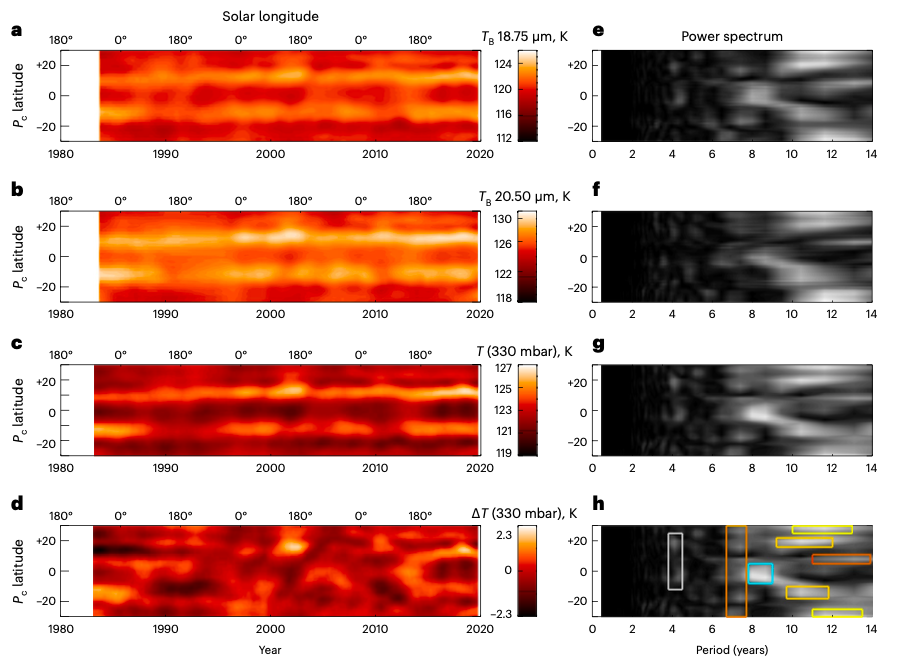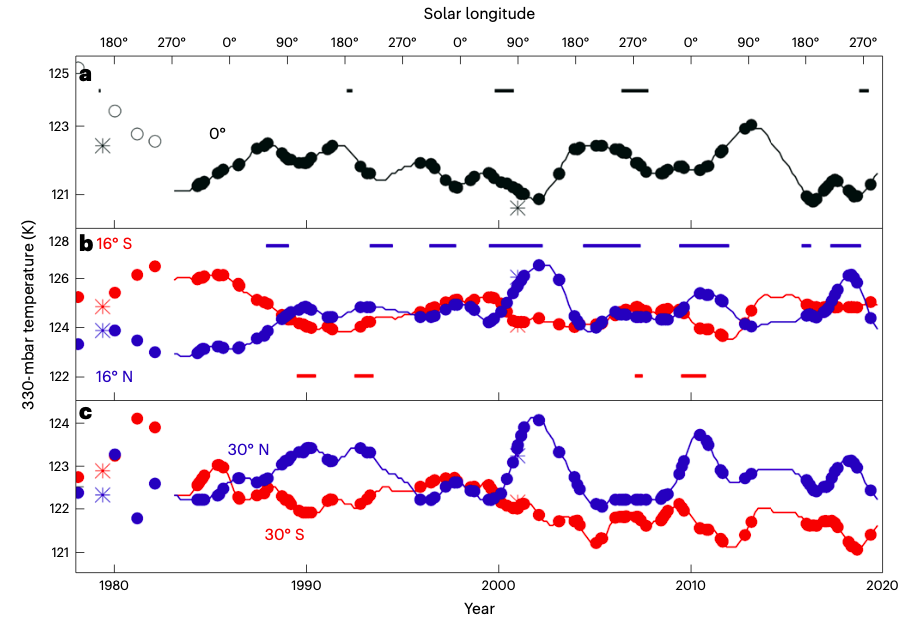Unexpected temperature variations within Jupiter’s atmosphere found by 40 year-long study

A group of scientists have completed the longest ever study of tracking the temperature of Jupiters’ upper troposphere. The study spans 4 decades of work, utilising data from both NASA spacecrafts and ground-based telescope observations.
The research into the temperature variations in the gas giants’ atmosphere was led by Glenn Orton, a senior research scientist at NASA’s Jet Propulsion Laboratory along with colleagues. During their research, the group had to write proposals several times a year to gain observation time on three telescopes: the Very Large Telescope, NASAs Infrared Telescope Facility and the Subaru telescope at the Mauna kea observatories. For the first two decades, the scientists took turns to travel to the observatories and collect data on the temperatures that would allow them to put together the ground breaking study, published on the 19th of December in Nature Astronomy.
The upper troposphere of Jupiter is the layer of atmosphere where its colourful clouds form, along with where the planet's weather occurs. Since this region functions similarly to earth’s atmosphere, scientists need to study certain properties like temperature and humidity to better understand the weather activity of the gas giant. There have been previous studies of Jupiter which suggested non-seasonal periodic behaviour, along with a relationship between the tropospheric and stratospheric temperatures, however, this research was conducted over time frames shorter than Jupiter’s 12-year orbit around the sun. The new study from Orton and team involves the study of bright IR glow images which are found in the warmer regions of the atmosphere along with direct temperature measurements above the clouds. The images were collected at regular periods over the duration of 3 orbits of Jupiter.

Brightness-temperature variations along Jupiter’s central meridian for two filters. The corresponding power spectra is shown on the right, with each box identifying a different period. (Credit: Orton et al., 2022)
The study found 10-14 year periodicities of temperature, which are close in duration to Jupiter’s orbital period of 12 years, however, this periodic rise and fall isn’t related to the seasons or any other known cycles. It was suggested that the variations may be attributed to a similar mechanism as those seen in time-dependent oscillations which are related to seasonal cadences, much like the semi-annual equatorial oscillation seen on Saturn. Such varying temperatures in regular cycles were unexpected since Jupiter has weak seasons due to an orbital tilt of 3°, which is small compared to Earth's tilt of 23.5°.

Additionally, the paper uncovered an anti-correlation between temperature changes in Jupiter’s opposing hemispheres. As the temperatures increased at a specified latitude in the northern hemisphere, they decreased at the same latitude in the southern half of the planet, where the equator acted as a mirror. “That was the most surprising of all,” said Glenn Orton, “We found a connection between how the temperatures varied at very distant latitudes. It’s similar to a phenomenon we see on Earth, where weather and climate patterns in one region can have a noticeable influence on weather elsewhere, with the patterns of variability seemingly ‘teleconnected’ across vast distances through the atmosphere.”
It was also seen that variations in temperature at greater heights in the stratosphere oscillated in an opposing pattern to variations in the troposphere, suggesting that changes in one have an effect on changes in the other. This research allows scientists to have a better understanding of Jupiter’s climate and could help them ultimately predict Jupiter’s weather. Not only that, but the study could contribute to climate modelling involving simulations of temperature cycles and their effect on the weather, possibly for all giant planets in our solar system and further. For now, the next mission is to find the cause for these mysterious regular and connected temperature changes. Co-author Leigh Fletcher of the University of Leicester states, “Measuring these temperature changes and periods over time is a step toward ultimately having a full-on Jupiter weather forecast, if we can connect cause and effect in Jupiter’s atmosphere. And the even bigger-picture question is if we can someday extend this to other giant planets to see if similar patterns show up.”
--
Cover image: NASA / ESA / NOIRLab / NSF / AURA / Wong et al. / de Pater et al. / M. Zamani.
Journal source: Glenn Orton, Unexpected long-term variability in Jupiter's tropospheric temperatures, Nature Astronomy (2022). DOI: 10.1038/s41550-022-01839-0. www.nature.com/articles/s41550-022-01839-0
